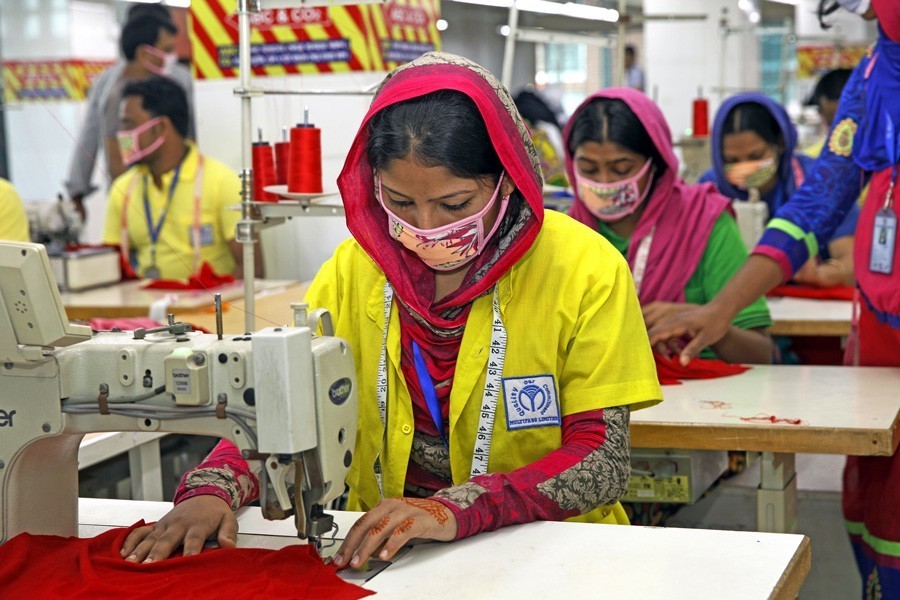The growth of the country's readymade garments (RMG) sector has been rather insignificant during 2016-17 and 2017-18 fiscal years as it grew by 0.2 per cent and 8.7 per cent respectively. However, growth rate picked up the following year, thanks to a depreciating currency and a rise in exports to the United States market.
Bangladesh has greatly benefitted from the US government's termination of Trans-Pacific Partnership (TPP) agreement with 11 countries -- Australia, Japan, New Zealand, Canada, Mexico, Singapore, Malaysia, Vietnam, Brunei, Chile and Peru. This led to a newly imposed tariff on Vietnamese garments, one of Bangladesh's major competitors.
However, today Bangladesh's major export-earning industry faces a number of challenges.
Once Bangladesh graduates to a middle-income country, it will have to wean off from preferential trade benefits such as Generalised System of Preferences (GSP) which it is entitled to in the European Union market. Loss of cost competitiveness will be detrimental for the apparel sector. This is a major trade challenge for Bangladesh. Another challenge that awaits this sector is evading the low value-low margin market segment producing volume-driven products.
However, the sector players lack preparedness for shifting to a higher margin segment and producing products with higher ticket price and developing high fashion products. The Tazreen fashions fire accident and Rana Plaza collapse threatened the RMG sector and credibility of purchasing garments from Bangladesh has been questioned. Approximately 1,500 companies were shut down as a result of failing to comply with the Accord and Alliance.
A major problem in this sector is sub-contracting. Those apparel companies currently in operation need assistance with organisational and human resources development. The move towards higher margin apparel segment will be beneficial since incremental overhead costs will be absorbed and a higher profit margin can be attained.
Still, as a result of the pressure exerted by the Accord and Alliance Bangladesh has been able to change the perception of the RMG sector among foreign buyers to a certain extent. However, the compliance issues have interfered with profit margins. The small and medium enterprises (SMEs) are not efficient enough and fail to comply with labor laws and buyers' codes of conduct. They fail to send their shipment on time and suffer from liquidity crisis and thus are unable to pay worker's wages timely. Therefore, they face risk of losing their businesses. Consequently, there will be a rise in unemployment rates.
On the other hand, the large factories will be able to sustain as they are cost-effective and they meet compliance requirements. Some of the productive workers who lose jobs as a result of shutting down of inefficient factories may attain employment in the large factories. This will have spillover benefits in the economy and help raise industry image in importing countries. Regardless of the fact that some of the workers will be able to find their way back into employment in the apparel sector, majority of the workers will be losing their jobs and livelihoods. In this situation, the challenge for the country is to take measures to ensure their inclusive development.
The Bangladesh economy is highly dependent on the RMG sector for foreign export earnings. A major challenge that lies ahead is hunt and creation of export-oriented sectors, in order to generate quality jobs. It is high time the country reduced its dependence on the RMG sector and opted for diversification.
The RMG sector also faces a challenge of maintaining a balance in terms of setting minimum wages at an appropriate level and ensuring the sector's cost competitiveness. As a consequence, some factories have opted for automation in order to reduce their dependency on labour. Automation will have adverse effects on those workers employed in the RMG industry.
Despite the challenges the RMG sector has set a target of $50 billion exports by 2021. This target can be reached if the country grows at a higher rate. China will be moving on to high-tech segment from the lower one and Bangladesh can take advantage of shifting orders.
The apparent sector can overcome the current challenges by focusing on inclusive growth. Inclusive growth can be ensured by introducing a strong wage policy and making timely adjustments to minimum wages prior to consultation. This strategy will also help raise competitiveness of the sector and ensure better social protection for garment workers.
Saba Khan is a Research Economist at South Asia Network of Economic Modelling (SANEM).


